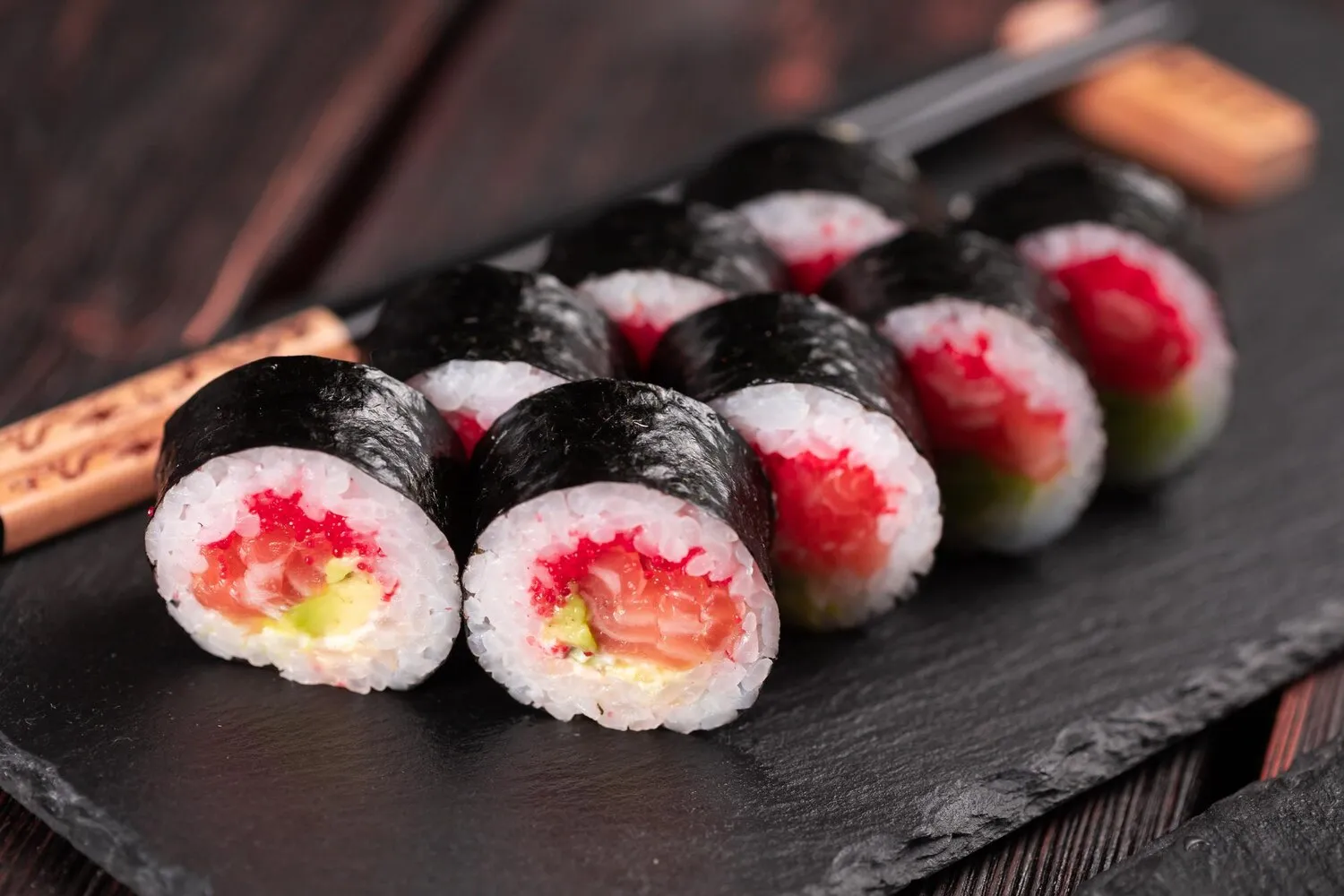
California Maki
Crab stick, cucumber and avocado
Nutrition Facts
* The % Daily Value (DV) tells you how much a nutrient in a serving of food contributes to a daily diet. 2,000 calories a day is used for general nutrition advice.
California Maki emerged in the United States, primarily in Los Angeles, in the 1960s or 1970s. It was created to appeal to Western palates, which were initially hesitant towards traditional raw fish sushi. Chef Ichiro Mashita of Tokyo Kaikan restaurant in Los Angeles is often credited with its invention.
California Maki represents the fusion of Japanese culinary techniques with American tastes and preferences. It reflects the adaptation of sushi to a new cultural context.
Americanized Sushi
California Maki is considered a gateway sushi for many Americans. It introduced the concept of sushi in a less intimidating way, paving the way for the acceptance of more traditional sushi varieties.
Cultural Exchange
The dish highlights the cultural exchange between Japan and the United States, showing how culinary traditions can be adapted and reinterpreted in different environments.
Popularity and Accessibility
California Maki's accessibility and mild flavor profile contributed to the widespread popularity of sushi in the United States and beyond. It is a common item on sushi restaurant menus globally.
California Maki offers a balanced flavor profile that is mild, slightly sweet, and savory. It focuses on textures as much as taste.
The crab stick (imitation crab) provides a subtly sweet and savory flavor with a slightly chewy texture. Avocado contributes a creamy, rich, and buttery taste. Cucumber adds a refreshing crispness and a slightly vegetal note. The rice is seasoned with vinegar, adding a tangy counterpoint to the other ingredients. Some versions incorporate mayonnaise for added creaminess and a touch of sweetness.
Rice Preparation
Use high-quality sushi rice and season it properly with rice vinegar, sugar, and salt. Allow the rice to cool completely before rolling to prevent it from becoming sticky and difficult to handle.
Ingredient Quality
Choose ripe but firm avocados for the best texture. Use good quality imitation crab meat for the most authentic flavor, if using imitation crab. Fresh, crisp cucumber adds a refreshing element.
Rolling Technique
Use a bamboo sushi rolling mat to create a tight and even roll. Moisten your hands with water to prevent the rice from sticking. Gently press the mat to shape the roll, and slice with a sharp, wet knife for clean cuts.
Variations
Experiment with adding sesame seeds to the outside of the roll for added texture and flavor. Some variations include cream cheese or a spicy mayonnaise.
Explore additional Maki dishes and restaurants
Explore MakiDiscover top dining spots and culinary experiences in Leiden.
Explore LeidenLearn more about the food culture, restaurant scene, and culinary heritage of Netherlands.
Explore Netherlands